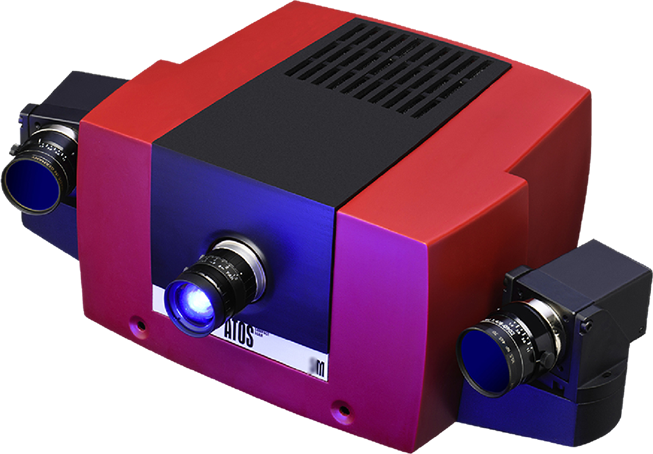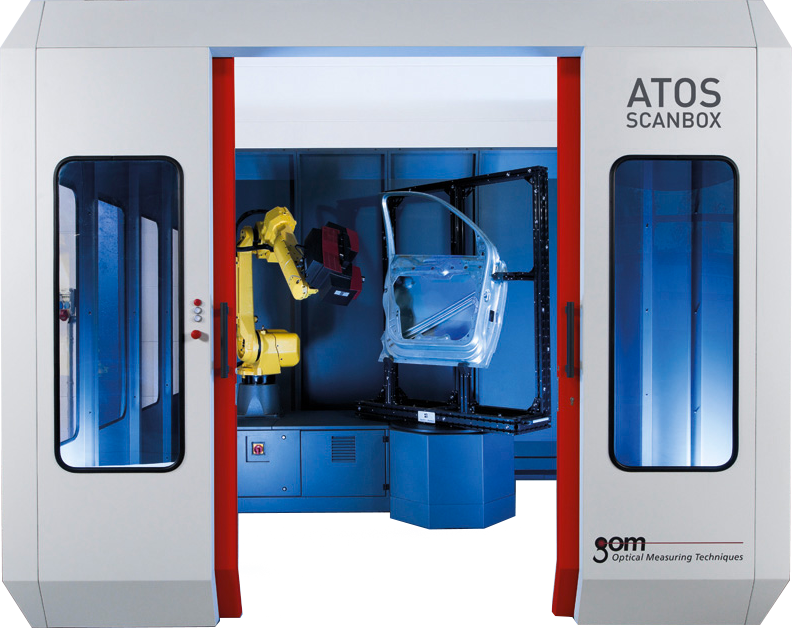3D Scanning
3D Scanning With Optical Technology
We offer a 3D scanning service that allows converting a physical object into a digital file to use on PC. There are different systems that implement this process: as a matter of fact, the 3D scans can be “by contact” or “optical”, where the former needs “a winding” that comes into contact with the specific to be examined, while the latter does not need it.
Particularly, Cor.Sa 3D performs optical scanning (without contact with the model) that works in this way: the acquisition of the point cloud is given by the deformation of linear fringes emitted by the projector on the piece itself; the points of reference of the virtual model are obtained by the use of adhesive markers, which allow moving around the object to take all of the necessary measurements to obtain a STL as complete as possible.
Two fundamental aspects are taken into consideration in the execution of the measurements: the material and the color, two characteristics that may affect the quality of the 3D scanning. To compensate for any problems, in certain situations it is necessary to use a flattening spray that allows to obtain a more homogenous and non-reflective surface, thus reducing measurement times and improving the mesh quality.
Once the 3D scan is performed, the required operations are carried out and the files are exported in the indicated digital formats.

What is a 3D Scanning of an Object For?
3D scanning allows obtaining three-dimensional files that are useful in various sectors: from automotive to aerospace, from architecture to cultural heritage to the medical, dental and orthopedic field, but also in mechanics, in reverse engineering and in 3D printing.
In fact, 3D scanning offers the possibility to digitalize an object and make it usable on a computer, thus widening the productive possibilities in an unprecedented and fast way. It is in this way that 3D scanning services are changing every productive process: in orthopedics, it becomes possible and economically more convenient to personalize prosthesis or braces by scanning patients’ body parts and offering them a better path of rehabilitation; in the Arts, it is possible to give life to three-dimensional museums through the reproduction of a virtual work of art or perform restorations with a high level of fidelity. These two very different examples perfectly illustrate the potential of 3D scans and their unlimited scope.
What is a 3D Scanner?
To run a 3D scanning service it is necessary to use a three-dimensional scanner (or 3D scanner). It is an instrument composed of hardware and software with which an object is examined acquiring three-dimensional data relative to its form. This process may take place in an automatic, semi-automatic or manual way, with or without the direct intervention of an operator. After having run the 3D scan, the scanner obtains a digital three-dimensional model of the object being examined, commonly called STL. Through the use of specific software, it is possible to make changes or corrections on this file depending on the purpose of use.
There are primarily two types of 3D optical scanners: structured light and laser.
Structured Light 3D Scanner
The structured light three-dimensional scanner projects a beam or a spot light on the object; the three-dimensional model is obtained based on the deformation that the light itself endures on the surface under examination. This system offers several advantages for the realization of 3D scanning compared to the traditional mechanical probing system, because:
- It does not call for any contact with the surface of the object, therefore being able to analyze delicate, heavy or “soft” objects without difficulty.
- It is possible to obtain- in the acquisition phase and with a single measurement- thousands of points.
- It has a vast versatility of use- from industry to art and it suits different needs contributing to increasing precision and possibility.
- Thanks to its precision of acquisition and the help of software for dimensional control, it allows for the verification of deformations and by measuring deviations from the theoretical by overlapping scanning and CAD files.
Laser Light 3D Scanner
This type of three-dimensional scanner uses laser light projected on the object and represented by a “line” that moves highlighting the different forms. The system appears to be a little more work: in fact, to obtain a detailed view of the object, it is necessary to wait for the complete mapping by the laser; in fact, the acquisition of the object takes place by means of laser triangulation which increases the coverage of the scanned area, reflecting with sensors the position of the ray on the object.
Both of the technologies— structured light 3D scanner and laser light 3D scanner—allow you to perform 3D scanning in different ways: revolving, suitable for the rapid scanning of specifics that are not too complex; flat, to scan more elaborate specifics thanks to the movement of the work plan and the scanner head.
Recently automated stations for 3D scanning have been introduced on the market that, using anthropomorphic robots and specific automatism software, allow to further speed up the process.

The Cor.Sa 3D Setup
For its 3D scanning services, Cor.Sa 3D uses:
Hardware
ATOS COMPACT SCAN 2M of GOM
- Camera resolution: 2 x 2 000 000
- Measurement area: 35 mm² up to 1000 mm²
- Distance between the points: 0.2 mm – 0.62 mm
- Working distance: 450mm – 1200mm
Software
- ATOS 3D Digitizing for the acquisition of the cloud points
- GomInspect for analysis and correction
- Geomagic Studio and Design X for reverse engineering
- Cimatron E for CAD and CAM

Would You Like To Realise Your Project With Us?
